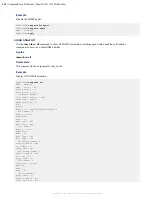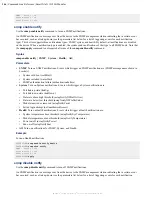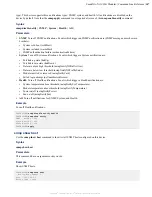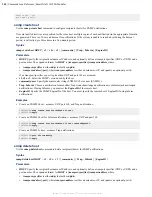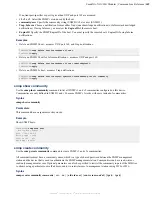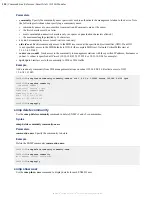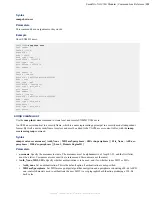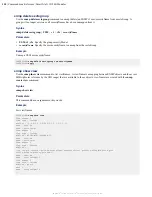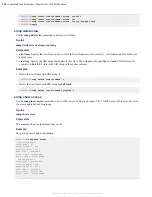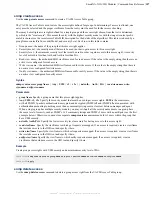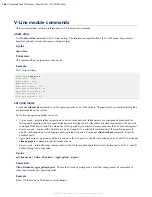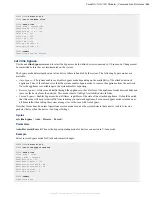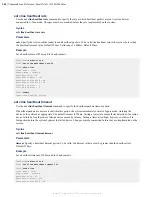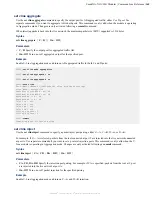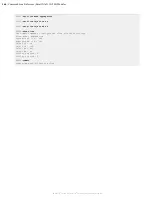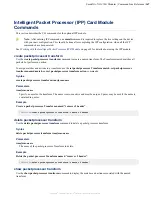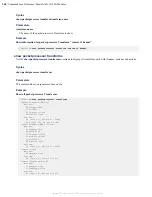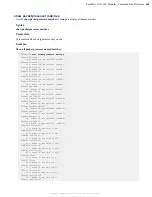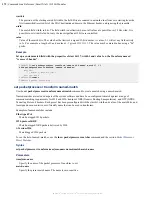
158
| Command Line Reference | SmartNA-X 1G/10G Modular
SmartNA-X
™
1G/10G User Guide 1.4
©
2015 Network Critical Solutions Limited
Syntax
snmp delete access
groupName
{
Any
|
USM
|
v1
|
v2c
} {
noAuth
|
Auth
|
Priv
}
read-viewname
write-
viewname
notify-viewname
Parameters
•
groupName
Specify a group name that this access right applies.
•
Any, USM, v1, v2c
Specify the security model that must be used to get access rights.
•
noAuth, Auth, Priv
Specify the lowest security level necessary for having access to this access right.
•
read-viewName
Specify the viewName to which get requests are mapped.
•
write-viewName
Specify the viewName to which set requests are mapped.
•
notify-viewName
Specify the viewName to which notify requests are mapped.
Example
Delete group access rights with USM security and a minimum security level of Priv:
CONTROLLER>
snmp delete access
groupName
usm priv
CONTROLLER>
apply
snmp show comtosec
Use the
snmp show comtosec
command to list mappings from a source/community pair to a security name.
The comtosec security name is distinct from the community string that is mapped to it. They can be the same ("public")
or different ("mynet"/"private") - but what appears in the group directive is the security name, regardless of the original
community string.
Syntax
snmp show comtosec
Parameters
This command has no arguments or keywords.
Example
Display community secrets to security name mappings:
CONTROLLER>
snmp show comtosec
Comtosecs number 0
IP protocol version : ipv6
comString : communitysecret
secName : securityname
source :
Comtosecs number 1
IP protocol version : ipv4
comString : communitysecret
secName : securityname
source : 10.10.10.10
...
snmp create comtosec
Use the
snmp create comtosec
command to create mappings from a source/community pair to a security name, either
from a particular range of source addresses or globally with the keyword
default
.
The same community string can be specified in several separate directives (presumably with different source tokens),
and the first source/community combination that matches the incoming request will be selected. The comtosec
security name is distinct from the community string that is mapped to it. They can be the same ("public") or different

